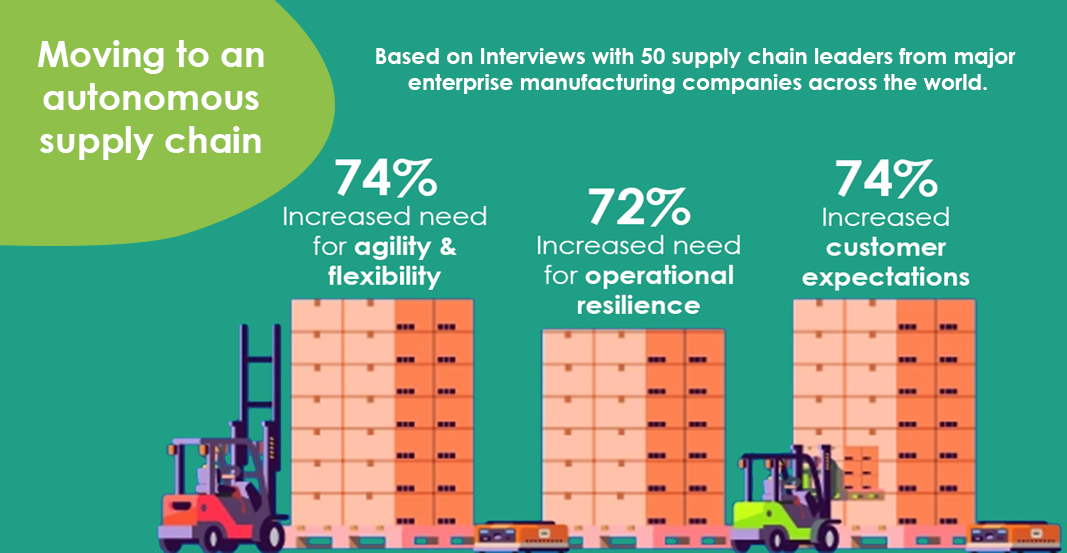Maximize Supply Chain Reliability

Transform Execution with Better Foresight
When considering the value of inventory optimization, try to visualize a holistic state whereby the optimal amount of inventory is available to meet both current and future customer demand. Thereby reducing the cost of issues that create back orders, overstocking, and stock-outs. Demand forecasting holds the key to effective inventory planning. Imagine your business properly equipped to accurately project future product life cycles, and the huge dividends it will pay via improved margins and reduced operating costs. Likewise, all manufacturers and distributors need the right supply chain visibility to deliver responsiveness and grow service levels. For example, it’s vital to balance the shortage of raw materials when supplier lead-times are taking longer than anticipated. The wrong choice may create excess inventory that accumulates across your global warehouse footprint, reducing working capital. This is presently happening to many such companies, who tend to over rely on the metrics and static planning recommendations offered by their existing SAP, and Enterprise Resource Planning (ERP) systems. Instead, it may be better to consider integrating autonomous forecasting software like Empowered-AI® into your ERP, leveraging the best available technology. At can be very challenging to adapt a forecast on the fly in the middle of a crisis such as the war in Ukraine and microchip shortages, not to mention the impact of complexity on your S&OP teams to calculate and make adjustments.
“A 10% increase in forecast accuracy generates a
two percent reduction in supply chain inventory, costs”.-Gartner
From our perspective, the best way to inoculate your supply chain against market volatility is to align your forecast to the right external data signals that most impact your operations. For example, when inflation levels rise and
interest rates increase, demand for specific automobiles may fall. Which is why historical data alone is not enough to accurately predict what will happen in the future. It is important to sensitize your planning arsenal to detect
disruption before it affects production and sales, reducing risk and vulnerability. It is important to remember how the world has changed since the advent of Covid-19. Today, increased uncertainty is now a way of business life, which
is why the application of external data modeling enhanced by AI is necessary to prevent further consequences, escalated by on-going inventory inefficiencies. AI enables a better way to harness actionable data that can help transform
behavior and execution. Especially in comparison to your existing software, it may not be responsive nor adaptive enough to match the speed of current transient events. Alternatively, imagine all your satisfied customers when you
have the right stock on hand to meet demand and deliver it everywhere it is needed.
Generate Demand Visibility and Drive Responsiveness

When done right, integrated supply chain forecasting generates fewer overall planning errors because it seamlessly connects all phases of your sales and operations process. It helps maintain the optimal balance between supply inventory and available finished goods. From Vizen’s perspective, everything begins with the ability to reliably predict forward product demand, preferably between three to six procurement cycles ahead. This is important to remember, especially when considering the supply chain process necessary to fulfill future customer orders, including making the right product and sourcing raw materials on-time. The art of collaborating with your cross-functional teams becomes essential. An aligned supply chain organization will enable higher operational efficiency resulting in better returns on invested capital, igniting top line revenue growth and improving product margins.
The Impact of Causality on Performance Expectations
It is important to realize how certain KPI metrics are connected and have a causal effect on each other. For example, observing how the delivery of raw materials can impact your on-time in-full (OTIF) rates. If your supplier consistently misses its lead-time interval, there will likely be an impact on your service levels. Your operations team may respond by ordering an excess quantity, ensuring an adequate supply of finished goods inventory, thus reducing working capital that may be needed in other areas. Or you may elect to live with the effect of uneven sourcing and then face back-order issues that drive expedites, fines and lost sales. Presently, there is a significant gap in the time it takes to receive your raw ingredients, integrate them into a finished product and then ship to your customer. It is clear to see the necessity in having enough supply on-hand to meet future demand. The less errors generated on both sides of this equation the better, as it minimizes uncertainty and enhances performance. Specifically, an overstock issue can lead to inventory waste which impacts the bottom line. Whereas, stock-out conditions (not enough inventory items) may affect customer satisfaction, not to mention reducing sales revenues.
Vizen assists in mitigating these risks by augmenting historical demand planning efforts. Through automation, we evaluate market volatility impacting anticipated product purchases (health, seasonality, weather and economic factors)
and then utilize them to more accurately plan future results. The combination of historical data and causal based external modeling generates the best predictive performance. Our supply chain software has proven to be at least 10%
more accurate in comparison to other AI offerings and up to 30% better than standard forecasting.
